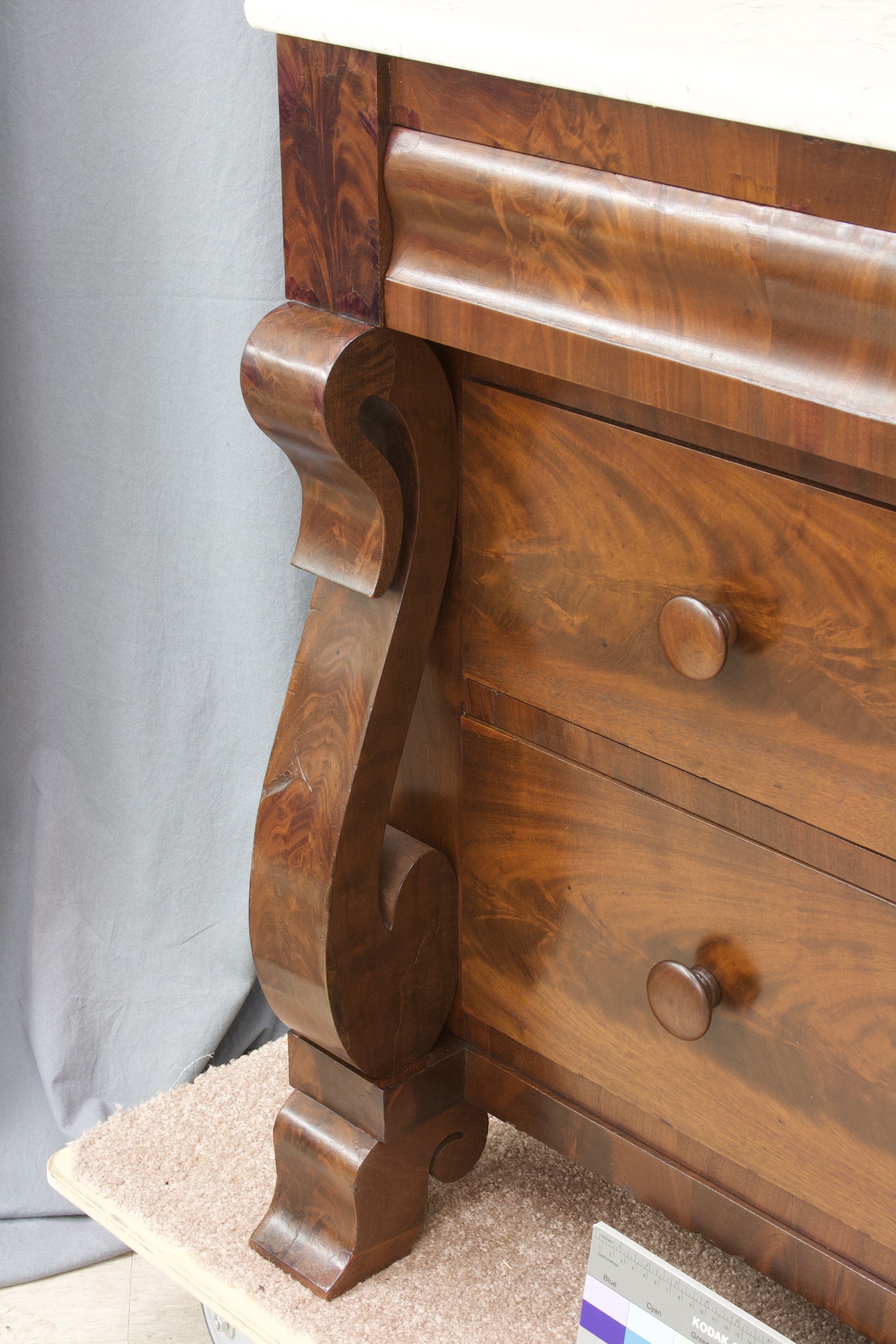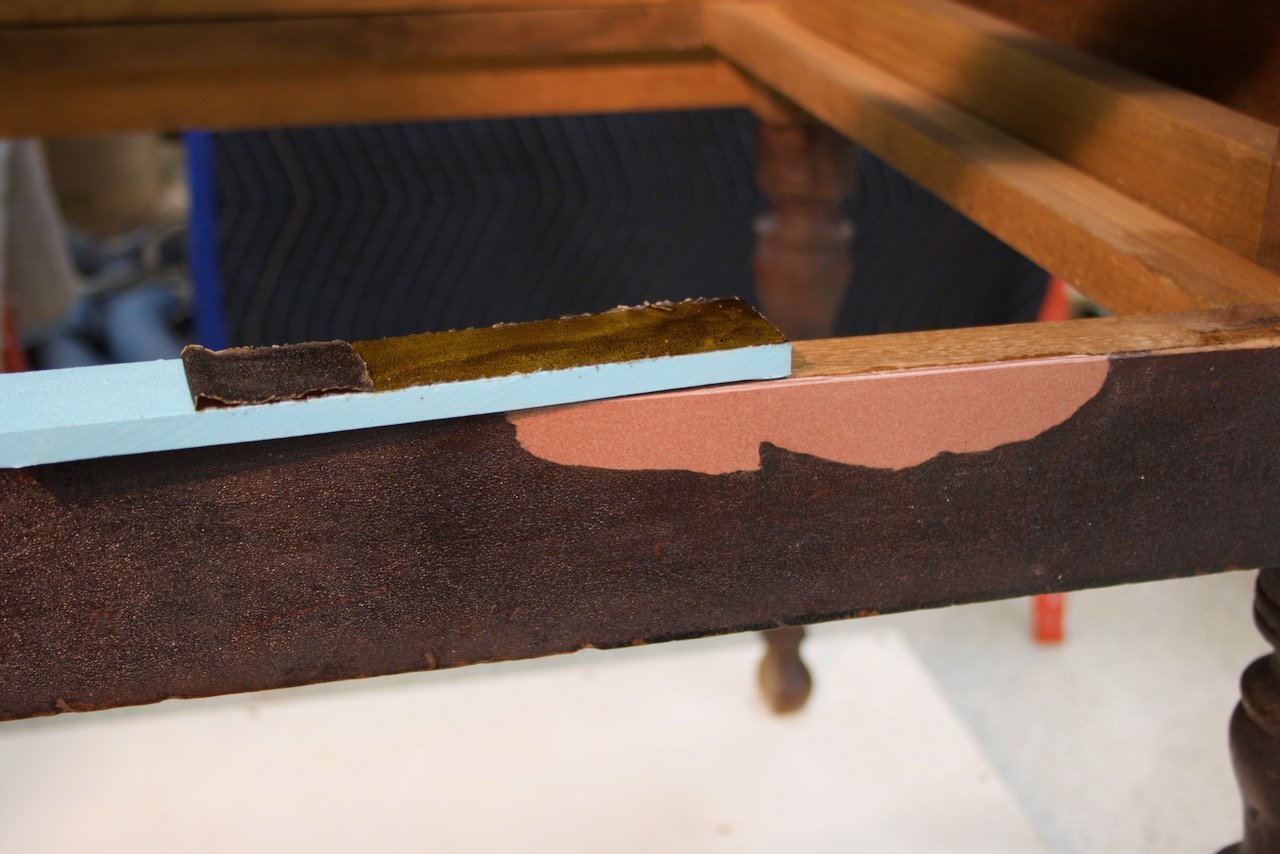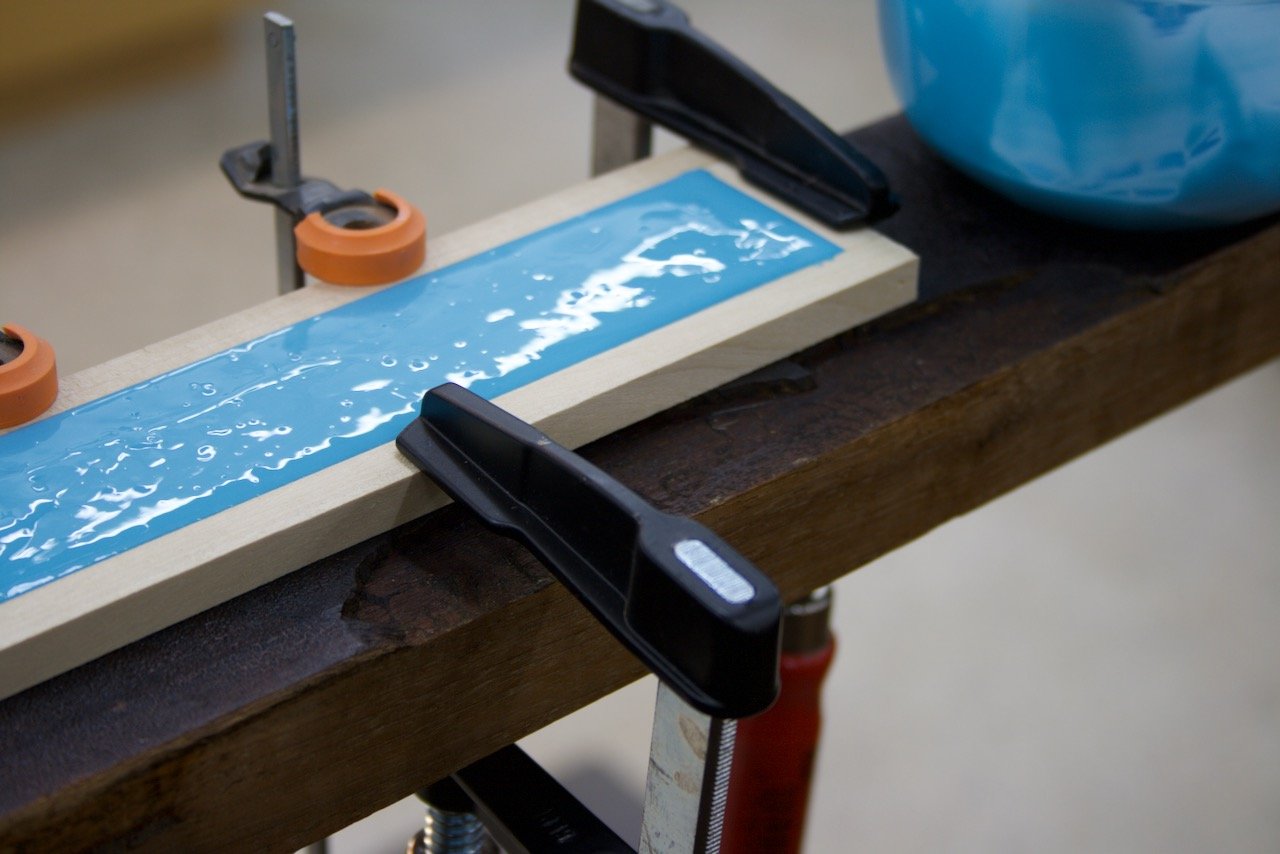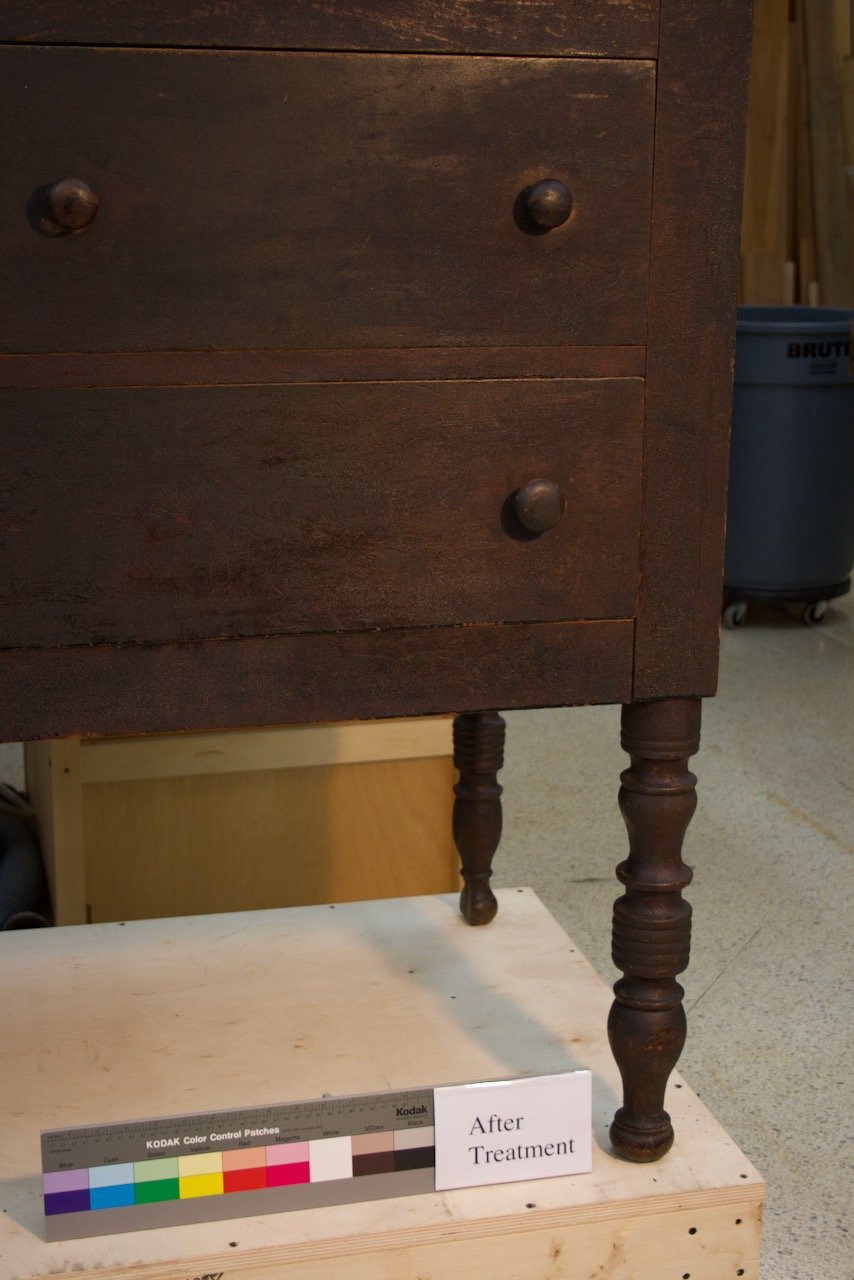Conservation and Restoration
Most of my work for the past 38 years has been conservation of furniture and other wooden artifacts for private individuals and institutions. I offer veneer work, carving, turning, gilding, inlay and marquetry, fine finishing and decorative painting as well as conservation of all coatings.
As a Professional Associate of the AIC (American Institute for Conservation), I follow their code of ethics when treating any object regardless of age or value. Every object I treat receives the highest level of care and respect I can provide. Conservation treatments are more than simply fixing something that’s broken. It asks how to give your object the best chance for surviving, not just your lifetime, but for generations to come. Conservators use materials that are scientifically vetted, but equally important, we use a thought process that is, to quote Buckminster Fuller, “comprehensive and anticipatory.”
See this AIC post about why you should consider hiring a professional conservator: https://www.culturalheritage.org/professional-membership/why-hire-a-professional
This AIC page tells you about the AIC Professional Membership: https://www.culturalheritage.org/professional-membership/about-professional-membership
This is homepage of the AIC (American Institute for Conservation) https://www.culturalheritage.org
Veneer Compensation
Chest of drawers 1830-1840 attributed to Thomas Day
All lifting veneer was stabilized with hide glue. Losses were compensated by carefully fitting in new veneer selected for color and grain. Although some areas were compensated using a reversible synthetic infill which was then grain painted to match.
Complex Veneer and Varnish Compensation
The images below illustrate a non-instrusive method of compensating loss to a section of veneer and wrinkled varnish on an important sideboard in MESDA’s collection.
The challenge was to duplicate the wrinkled texture of the old (probably original) finish. I first took an impression of the textured finish using a two-part silicone mold (upper right).
I then applied a barrier of hide glue in the area of loss and filled this area with epoxy colored to match the undertone of the walnut. (left)
Next, I applied multiple layers of dyed and pigmented shellac to the mold. The shellac film conformed to the wrinkled “alligatored” surface of of the silicone mold. In the image on the right, I am just beginning to peel the dried shellac film from the silicone mold.
Last, I applied the shellac film to epoxy with clear shellac acting as a ‘size’ similar to how oil gilding is performed. (lower left image).
Selective varnish removal
These images illustrate the process of removing deteriorated coatings and other discoloring materials from painted and varnished surfaces.
As a Professional Associate of the AIC (American Institute for Conservation), I follow their code of ethics when treating any object regardless of age or value. Every object I treat receives the highest level of care and respect I can provide. Conservation treatments are more than simply fixing something that’s broken. It asks how to give your object the best chance for surviving, not just your lifetime, but for generations to come. We use archival materials, but equally important, we use a thought process that is, to quote Buckminster Fuller, “comprehensive and anticipatory.” Visit the AIC site for more about conservation of all artifacts https://www.culturalheritage.org
This is a helpful glossary of conservation/preservation terminology: https://ccaha.org/preservationglossary













